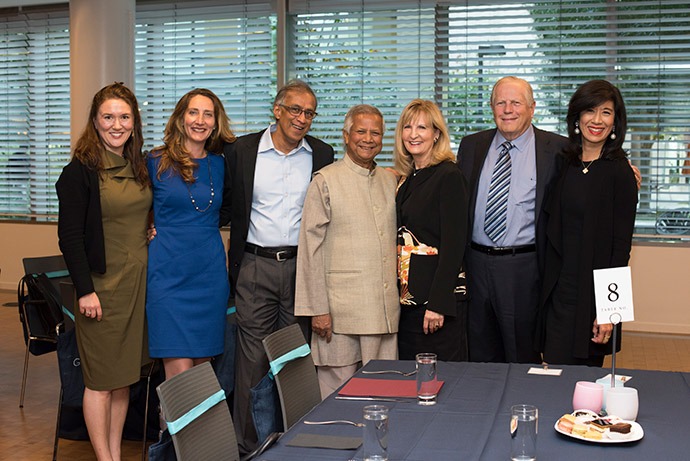Welcome to the October 2017 issue of the Global Washington newsletter.
IN THIS ISSUE
Letter from our Executive Director
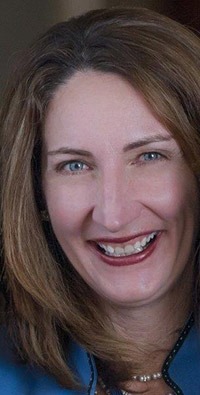
This month Global Washington published a new report on the Global Development sector in Washington state. It highlights not only the tremendous global reach of organizations based here, but also the increasing variety of partnerships we’re seeing between our non-profit and corporate members seeking ways to expand their social impact to improve lives in developing countries.
Our Global Development sector includes socially-minded leaders within financial services, such as JPMorgan Chase and Grameen Foundation, who are financing sustainable agriculture – raising farmers’ incomes, reducing extreme poverty, and improving food security globally.
Increasing food security is both critical for a thriving, equitable future and incredibly complex in finding sustainable solutions. I remember being struck by the level of complexity and variety of players in agricultural development when I first attended the World Food Prize in Iowa over a decade ago – an award given each October that recognizes effort to improve the quality, quantity or availability of food in the world.
The organizations we’ve profiled in this month’s newsletter have wrestled with many of these challenges, and have come up with a unique set of approaches that I hope you’ll find inspiring and impactful. We are also discussing these issues on November 2 at a panel discussion with JPMorgan Chase, Grameen Foundation, and the Gates Foundation.
Lastly, if you haven’t yet registered for our annual conference, visit Renewing.Global to join us and continue the conversation on November 29. One of the speakers I’m particularly excited about is Dr. Alaa Murabit who is the Founder of the Voice of Libyan Women. Hope to see you there!

Kristen Dailey
Executive Director
Back to Top
Issue Brief
Financing Sustainable Agriculture
By Joanne Lu
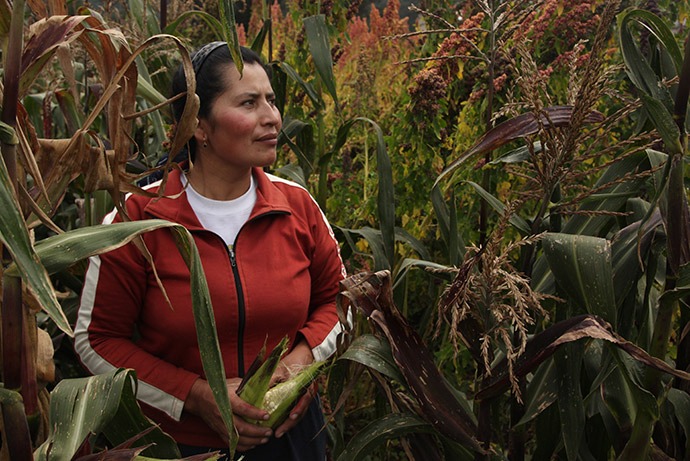
(Photo: Jim Cline/Grameen Foundation)
After more than a decade of steady decline, the UN Food and Agriculture Organization announced in September that global hunger is on the rise again. In 2016, global hunger affected 815 million people – 38 million more people than the previous year – and much of that increase was due to violent conflicts and climate-related shocks.
The need for sustainable agriculture has never been more urgent. Global demand for food has risen precipitously, even as climate change continues to upset delicate regional ecosystems, exacerbating natural disasters, pests, and diseases, and fueling increased violent conflict and human migration.
Scientists are also finding that because of the atmospheric changes, food crops are receiving more carbon dioxide, which results in higher sugar and carbohydrate content, but fewer nutrients. This means that even if a food supply is sufficient, malnutrition may remain a challenge.
Finding the money to pay for sustainable agricultural interventions has proven challenging, yet development experts see signs of hope.
According to the World Bank, about 80 percent of the world’s poor live in rural areas. Most of them – 65 percent of poor working adults – rely on farming for their livelihoods. Agricultural development is, therefore, one of the most powerful tools for raising incomes, reducing extreme poverty, and improving global food security.
The agriculture sector – especially smallholder farmers in developing countries – is in urgent need of resilient and sustainable farming practices to halt growing world hunger, reduce poverty, and mitigate climate change. Organizations and innovators are aggressively developing tools and techniques for “climate-smart agriculture.” The challenge is financing the transition.
“Farmers don’t have the money they need, and investors don’t know where to put their money,” Simone Bauch, Latin America director of the Global Canopy Programme, told Mongabay.
It’s a vicious cycle of high risk and low returns. Because these smallholder farmers are often in areas where capital markets are underdeveloped, their access to financial products such as loans and insurance, is limited. This leaves them with no credit history, no significant collateral, and no means to adopt more sustainable practices that would increase their resiliency and productivity. To potential investors, these are just more reasons they are risky.
But advocates say that financial instruments that incentivize sustainability and are tailored specifically to the needs of farmers can help transform risk into opportunity.
For example, some crops, like coffee, can take about four years before production becomes profitable. Loans with lower interest rates and longer terms – say, 15 to 30 years – can help farmers who are switching to sustainable agriculture survive these “valley of death” years that are usually characterized by high initial costs and reduced returns.
Insurance is another valuable instrument for mitigating risk. While farmers in developed countries take out insurance to cover potential losses, such policies are prohibitively expensive for most smallholder farmers in developing countries. Instead, some institutions have begun to offer cheaper index-based insurance, which protects against shared – rather than individual – risk when external factors exceed certain thresholds, like unusually high temperatures, low rainfall, or disease outbreaks.
The largest program currently offering index-based insurance is the Global Index Insurance Facility (GIIF), which is managed by the World Bank Group and funded by the European Union, Germany, Japan and the Netherlands.
Because of “co-variant nature” of the risks insured by index-based insurance, reinsurers are very helpful mechanisms to make sure a country’s economic losses from a disaster are shared with other insurance companies outside of the affected economy. All of GIIF’s programs are supported by reinsurers, such as Microinsurance Catastrophe Risk Organisation (MiCRO) in Central America, which was co-founded by Mercy Corps.
A recent report by the Global Canopy Programme listed other emerging financial instruments that can mitigate risks and incentivize sustainability as well. These include grants and subsidies, equity investments, green bonds, partial credit guarantees by non-governmental organizations or banks to compensate for smallholder farmers’ lack of collateral. Off-take agreements, in which buyers commit to purchase future production, also helps reduce risk.
Although these tools are not new, they can be combined into innovative financial mechanisms that incentivize sustainable agriculture, especially with the help of new technologies.
The World Food Program, for example, launched the Food Security Climate Resilience (FoodSECuRE) Facility in 2015. FoodSECuRE is a “multilateral, multi-year, replenishable fund” that reinforces community resilience not just during and after climate disasters, but also before they occur, using forecasts.
Forecast-based financing allows organizations to preempt disasters with early responses. Some, like Grameen Foundation’s FarmerLink in the Philippines, also disseminate forecast data and preparedness procedures directly to farmers through SMS alerts. Of course, the prevalence of mobile phones in developing countries has also created huge opportunities for financial services to reach remote farming communities.
Another emerging technology that some say has the potential to “revolutionize” the agriculture industry, especially for smallholder farmers, is blockchain. Blockchain creates a secure digital ledger system shared by all parties in a supply chain.
The transparency of a blockchain system would help farmers retain a bigger share of their crop value, as well as facilitate timely mobile payments and financing. As consumers increasingly demand organic, fair trade products, blockchain-based records would also allow producers and manufacturers to verify exact origins. Therefore, if adopted on a large scale, blockchain would also incentivize sustainable farming.
In practice, innovative solutions to financing sustainable agriculture fuse together existing resources – including financial instruments, investors, technology and human capital – to meet farmers’ needs first.
* * *
The following Global Washington members are working on financing for agriculture, and broader goals around global food security:
Agros
At Agros, agriculture production is a true partnership between staff and farmers. While the organization’s initiatives are market-oriented and follow best productive and environmental practices, they are also based on shared risk and mutual accountability. Agros provides working capital and market connections, while the farmers provide sweat equity. If a harvest fails, we both lose; if the production succeeds, we both share in the success. With a good crop, working capital is repaid and profits are shared equally: 50% to land repayment, 50% to the farmers. The result? Our land loan repayments are 97% in line: exponentially higher than industry standards.
Bill & Melinda Gates Foundation
The Bill & Melinda Gates Foundation seeks to increase the supply and affordability of nutrient-rich foods, reduce food price instability, empower women, and increase the levels of overseas development aid, and increase access to and use of digital financial tools. Our Level One Project and recently released, open source, Mojaloop mobile payment software uses blockchain technology to make it easy for a variety of financial service to work together to benefit farmers everywhere.
Global Child Nutrition Foundation
The Global Child Nutrition Foundation (GCNF) focuses on “home-grown”, large-scale school-based nutrition programs that contribute to food security around the world. GCNF encourages governments to leverage investments in school meal programs to benefit local, smallholder agriculture–and vice versa. School feeding programs provide a predictable local market for farmers, spurring them to produce more, and to produce more nutritious and diverse crops, thus promoting economic development while also investing in children and their futures. School meal programs provide about 30 percent of children’s nutritional needs each day at school, equivalent to adding that much to a vulnerable family’s food basket.
Global Partnerships
Global Partnerships invests in impact-led microfinance organizations, agricultural businesses and cooperatives that provide smallholder farming families with high-impact products and services: improved market access, technical assistance, agronomic education, and financial services including affordable loans and financing for agricultural inputs such as seeds and fertilizer. These enable smallholder farming families to increase and/or stabilize their income due to income diversification, improved yields, and better pricing for what they buy and sell. Last year, Global Partnerships invested more than $16 million in 12 countries through our rural-centered and smallholder-focused initiatives, and impacted an estimated 175,000 lives.
Grameen Foundation
Grameen Foundation’s mission is to enable the poor, especially women, to create a world without poverty and hunger. For a farmer, the journey out of poverty may begin with gaining first-time access to financial services. Grameen Foundation’s financing for sustainable agriculture comes in different forms. Financial services that meet farmers’ needs: loans, savings, insurance, payments, and the financial identity that accompanies these services can become an on-ramp for full economic activity. The foundation combines the use of digital technology, strong partnerships, and person-to-person training to tackle big, interrelated challenges: exclusion from the formal economy; lack of education and literacy; limited information on markets, agricultural practices and climate adaptation; and gender roles that limit opportunities for growth.
Landesa
Since its founding, Landesa has partnered with governments, communities and other stakeholders in more than 50 countries to advance pro-poor, gender-sensitive land rights reforms using law and policy tools. These reforms have helped alleviate poverty, reduce hunger, and ease conflict over land for more than 120 million women and men. This transformation—from land insecurity or landlessness to secure rights to land—has boosted agricultural productivity in the developing world by billions of dollars per year, improved health, nutrition and school enrollment in hundreds of villages across the globe, and placed scores of billions of dollars in new land wealth in the hands of the rural poor.
Literacy Bridge
Literacy Bridge helps the hardest-to-reach, non-literate, farmers learn and adopt sustainable practices using an audio device called the Talking Book. The Talking Book program empowers farmers with knowledge on topics such as integrated soil fertility management, money management, planting techniques, post-harvest loss prevention, and a range of health topics. The device also provides a channel for user feedback and usage monitoring to understand needs and interests. In partnership with AGRA, CARE, UNICEF, and others, nearly half a million people throughout West and East Africa have learned from the Talking Book new techniques to improve their health and income.
Mavuno
Mavuno’s mission is to develop local leaders to end extreme poverty in eastern Congo. The organization’s work in food security is geared toward a grassroots model of development. Mavuno develops local leaders through the creation of Grassroots Organizations (GO). The GO’s meet weekly, and Mavuno consults the partner communities to self-identify ways to tackle their community’s unique challenges – in ways that they choose, with tools they select. Mavuno supports the GO’s by providing financing, equipment and access to markets and quality agriculture inputs, as well as training from local agronomists. This structure fosters true grassroots leadership, giving the Congolese control of their future, along with a more stable food supply. Partner households improve their agriculture techniques, maximize their crop production and increase their incomes and food security.
Mifos
To support the needs of agricultural lenders and cooperatives in its open-source community, Mifos has extended its loan product configuration engine to support a completely flexible repayment schedule, one that maps to the actual cash flows of the farmers at harvest and planting of their crops. Organizations across Africa and Latin America use these variable installment loans to adjust the amount, frequency, and due date of installments for each farmer. Partners in Mifos’ ecosystem also leverage its mobile banking and field operations apps to enable outreach into remote and rural regions that lack formal branch infrastructure.
Oikocredit
Oikocredit is a cooperative social investor that supports over 180 agricultural partners in 35 countries. The Oikocredit cooperative has identified agriculture as a priority sector because it is one of the most effective ways of reducing rural poverty, strengthening food security, and mitigating the effects of climate change for smallholder producers. Oikocredit’s AgriUnit finances partners across agricultural value chains, including producer groups, cooperatives, traders, and other SMEs. Oikocredit supports farmers with capacity-building grants, education, and network services.
Oxfam
Oxfam aims to transform food systems so that small-scale farmers, food workers, and entrepreneurs realize their rights and capture more value for their work. Oxfam focuses on the people who grow and process food. The organization works to protect their livelihoods and help them claim their rights. Oxfam supports producers in accessing the tools, land, and capital they need to grow food, and helps them access the information and markets they need to sell it. The organization mobilizes consumers to challenge governments and companies to rewrite their policies and practices. Finally, Oxfam demands global action to respond to climate change.
Thriive
Nguyen Thi Mai, owner of Vinh Ha Vegetable Farm in Vietnam, couldn’t get a loan for equipment to increase her production, until she applied to Thriive. Thriive helps small businesses in the developing world with equipment loans. The loans are paid forward with donations to the community instead of back to Thriive in cash. Nguyen’s repayment is training for 15 very poor small holder farmers to grow more vegetables with her donated seedlings. With the added income they’ll earn, farmers are more likely to stay on their land, instead of moving to large cities, abandoning their children to other relatives, increased poverty, and the risk of trafficking.
Back to Top
Organization Profile
Grameen Foundation
By Joanne Lu
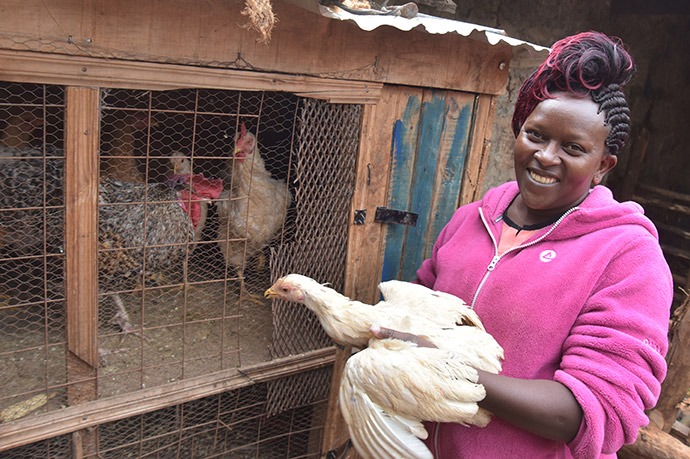
Digital-based loans give female farmers like Anne Ndungu the safe, reliable financing they need to build strong agribusinesses in Kenya. (Photo: Riccardo Gangale/ Grameen Foundation)
The Grameen Foundation is on a mission to “enable the poor, especially women, to create a world without hunger and poverty.”
To do this, it engages with a network of community partners in countries across Africa, Asia and Latin America to implement solutions in three main areas: financial services for women, digital innovations in agriculture, and health care financing and access. Though they appear to be distinct areas of work, there is actually a great deal of overlap.
“A lot of what we do is based on looking at interconnected problems and solutions,” Lauren Hendricks, Executive Vice President for Program Strategy and Institutional Relations, said.
For example, in Rajasthan, India, Grameen and its local partners, including Freedom from Hunger India Trust (FFHIT), worked with women’s self-help groups to address malnutrition. They trained Community Nutrition Advocates to not only educate the groups on health, but also on gender dialogues, financial literacy and resilient, nutrition-sensitive agriculture.
The strategies were as simple as encouraging women to eat at least one meal per day with their husbands, not separately as is the cultural norm. When families ate together, food quality and portions for women and children improved dramatically. It also opened the door for more gender dialogues,
“Women gained more decision-making power within the home, and more freedom of movement outside the home,” Saraswathi Rao, CEO of FFHIT, said in a press release. “And with this, they began to change the crops they grew, what they ate and fed their children, how they treated common childhood illnesses like diarrhea, and when and where they sought health care.”
Within two years, food security more than doubled for women and children, and 80 percent of women in the project had savings set aside for health.
“We focus on women for two primary reasons,” Hendricks said. “One is that women are disproportionately impacted by poverty. They are more likely to live in poverty than men are. But also, they are more likely to invest in the food, health, and educational needs of their children. When they move out of poverty, so do their families.”
Therefore, women’s engagement with interventions is critical in order to increase the productivity of smallholder farmers, who make up about 65 percent of the world’s poor.
Using a variety of digital tools, Grameen not only helps farmers increase actual production through good agricultural practices (GAP), but also continually develops a range of financial and health services around that.
In the Davao region of the Philippines, for example, Grameen’s FarmerLink program utilizes mobile technology to tackle four major issues that keep rural coconut farmers in poverty despite being in a multibillion-dollar industry.
To tackle low productivity, field agents document and digitize best practices and share them with farmers over their mobile phones. Field agents also work with farmers’ to help them comply with global organic certification standards. This significantly improves their direct market access.
An early warning system also alerts farmers through SMS and radio to pest outbreaks, diseases, and climate shocks so that they can respond proactively with treatments, protections, early harvesting or in extreme weather cases, evacuation. In one case, thousands of farmers were able to protect their trees from a four-month drought.
Finally, FarmerLink is helping smallholder farmers gain access to financial services.
“Agriculture finance is a big, hairy issue that we as a global community are trying to tackle,” Hendricks said.
Most financial institutions consider smallholder farmers to be very high risk because they lack any sort of credit history. However, FarmerLink compiles comprehensive profiles for each farmer through mobile tools. This data allows FarmerLink’s microfinance partner to determine which financial product is most appropriate for each client, whether it’s a financial literacy program, a savings tool, or a loan.
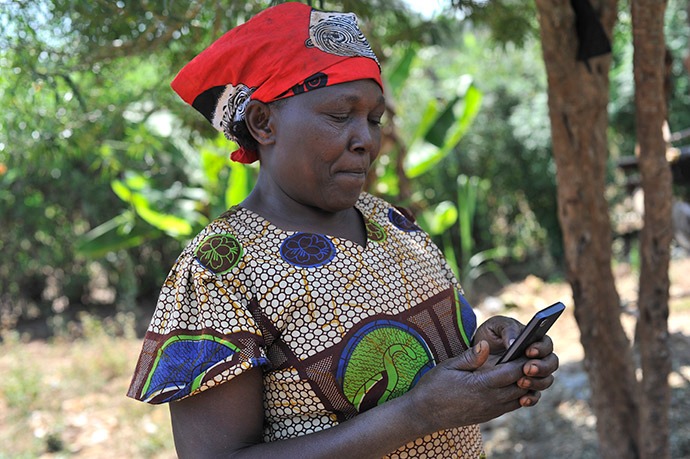
Digital technology helps farmers like Theresia Wairuba receive and repay loans via mobile phones. (Photo: Riccardo Gangale/Grameen Foundation)
“It gives the bank a lot of visibility to meet farmers where they are,” Ana Herrera, Grameen’s FarmerLink program manager, said. Such insight has enabled one financial partner to support farmers with loans for intercropping of coconut and cocoa, diversifying farmers’ income and strengthening their resilience. Shared data also provides an alternative means to assess credit risk. For example, a transaction history with the country’s major coconut exporter, Franklin Baker, serves to improve farmers’ credit ratings.
Grameen has a similar digital tool in Colombia called the Alternative Risk Evaluation Tool (ARET), developed in collaboration with the Andes farmers collective, and funded by Starbucks and the Inter-American Development Bank. Starbucks recently invested an additional $2 million for loans to support Andes members in replanting aging coffee trees and purchasing processing equipment. Grameen Foundation will continue to work with Andes to use ARET in support of farmers.
“With ARET, farmers don’t have to have a credit history,” Director of Marketing and Communications Bee Wuethrich said. “They can have a history of being really smart and responsible farmers.”
As part of the Grameen family of institutions – emanating from Muhammad Yunus’ Nobel prize-winning microfinance in Bangladesh, Grameen Bank – the Grameen Foundation bases many of its solutions on the idea of “bringing people who’ve been in the informal sector into a formal financial institution – one that’s really designed to meet their needs,” as Hendricks put it.
For example, Grameen and its partner, Musoni Kenya, designed a loan specifically for smallholder farmers. It allows farmers to draw down portions of approved loans as needed, since not all agricultural costs are up front. This means that farmers only have to pay interest on what they’ve taken out, and it prevents them from spending the money on other expenses.
This people-led approach is evident throughout Grameen’s efforts – whether it’s exploring development of a blockchain biometric identification database for people without officially recognized IDs, increasing women’s access to mobile finance by training more female agents, or fighting anemia with iron cooking pots.
No matter how complex or simple, the Grameen Foundation looks for solutions across finance, health and agriculture that “enable the poor to create a world without hunger and poverty.”
Back to Top
Changemaker
Matthew Arnold, Global Head of Sustainable Finance at JPMorgan Chase
By Andie Long
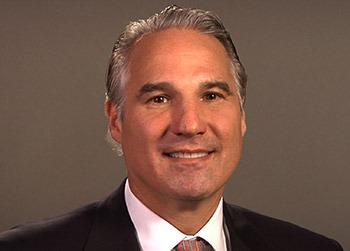 “My mom is a complete rockstar,” said Matthew Arnold, Managing Director and Global Head of Sustainable Finance at JPMorgan Chase.
“My mom is a complete rockstar,” said Matthew Arnold, Managing Director and Global Head of Sustainable Finance at JPMorgan Chase.
Asked who his role model was growing up, without hesitation Arnold names his 93 year old mother, a professor of pediatric endocrinology at Brown University’s medical school.
“Her basic code in life is it doesn’t matter what you do, just do it really well,” Arnold said.
Coming from a medical family, Arnold was always fascinated by science.
As an undergraduate at Harvard, he pursued psychobiology, studying the neural basis of behavior. He went on to get his Masters in International Relations from Johns Hopkins University, and an MBA from Harvard Business School.
Today, his passion for science has expanded to include his two college-age sons, one of whom is majoring in neuroscience, the other in physics. Like their dad, neither plans a traditional career path.
Arnold has a track record of starting businesses and initiatives that go on to shape larger efforts. In 2003 he founded Sustainable Finance Ltd, which was acquired by PwC in December 2008. After that, he served as principal and leader of Sustainable Business Solutions at PwC for nearly three years.
Prior to PwC, Arnold served as Chief Operating Officer and acting President of the World Resources Institute, having previously founded the Management Institute for Environment and Business, which merged with the World Resources Institute in 1996.
Arnold is excited about taking his environmental efforts further thanks to the assets and reach of JPMorgan Chase and its clients. “To me, finance is an instrument of social change,” he said. With $2.6 trillion on its balance sheet, JPMorgan Chase is in a position to wield that instrument powerfully, and in ways that are beneficial for society and the environment.
According to Arnold, JPMorgan Chase believes that giving more people access to opportunity and the chance to move up the economic ladder is intrinsically a good thing. Directing assets toward agriculture, poverty alleviation, and other development goals requires someone like him inside the organization helping set the direction.
Having worked at JPMorgan Chase for a little over six years, Arnold’s proudest accomplishment is the firm’s recent announcement of two new sustainability goals to guide the company’s sustainability efforts. The definition of sustainable finance for Arnold is “seeing finance flowing towards sustainability goals.” One example might be focusing on the supply chain of a major multi-national company, ensuring their suppliers have the resources to obtain sustainability certification.
JPMorgan Chase’s new sustainability goals, which include commitments to source renewable power for 100 percent of the firm’s global energy needs by 2020 and to facilitate $200 billion in clean financing by 2025, came together in late July. “I told my wife that night, ‘This is the most important thing I will ever do in my career,’” Arnold said. JPMorgan Chase’s senior leaders all signed off on the commitments. “It creates momentum like I’ve never seen before,” Arnold said.
The company is focused on scaling its efforts to reach as many people as possible. “We have a team of people who are constantly ginning up new ideas – whether it’s focused on healthcare for disadvantaged communities, the environment, agriculture, education, or microfinance and financial inclusion,” Arnold said
To Arnold, success will be seeing JPMorgan Chase’s sustainability commitments take a life of their own. “If you build something that goes away when you leave, you haven’t built anything at all,” he said.
In his early 50’s, Arnold took up triathlons obsessively. It was something of a midlife crisis, he admits, but one he excelled in as he was able to qualify for a national championship. An injury put a damper on that obsession, but he continues to nurture another dream – becoming the sports program director at an orphanage in southern Africa.
Arnold’s wife, Elizabeth Littlefield, is onboard with this plan. A fellow Africanist and social finance guru, Littlefield has served as a director at the World Bank (twice), CEO for the Consultative Group to Assist the Poor (CGAP) and President & CEO of the Overseas Private Investment Corporation.
Together, this sustainable finance power couple is likely to continue driving change in surprising ways.
Matthew Arnold will be speaking at the Rainier Club in Seattle next Thursday, Nov. 2nd on a panel about Financing Sustainable Agriculture. Tickets are still available. The panel is jointly organized by GlobalWA and World Affairs Council.
Back to Top
Partnership Highlights
Q&A with Ambassador Sally G. Cowal, Senior Vice President, Global Health, American Cancer Society
By Andie Long
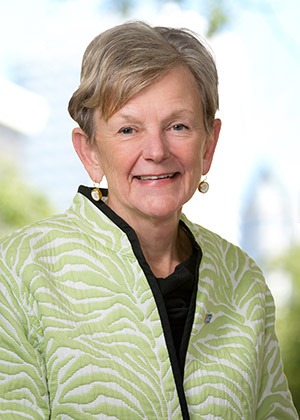 The American Cancer Society, a member of Global Washington, has a long history of working towards a cancer-free world. With chapters in all fifty states, the organization has a great deal to show for its efforts, including the fact that 47 researchers who have been funded by the organization have gone on to receive a Nobel Prize for their work.
The American Cancer Society, a member of Global Washington, has a long history of working towards a cancer-free world. With chapters in all fifty states, the organization has a great deal to show for its efforts, including the fact that 47 researchers who have been funded by the organization have gone on to receive a Nobel Prize for their work.
In early October, the American Cancer Society announced a breakthrough partnership with two pharmaceutical companies, modelled after the campaign to fight HIV/AIDS and designed to provide affordable cancer drugs to people in Africa. I recently talked with Ambassador Sally Cowal about this partnership and the other global work that ACS does.
Following is a transcript of the conversation with Ambassador Sally Cowal, edited for length and clarity.
Many people don’t realize that the American Cancer Society has a global mission. Can you talk about what percentage of your work is focused globally?
Of course, we are the American Cancer Society, and by history, mission, and definition, our focus remains the United States. The global program, in terms of percentage, is a very small part of what we do.
My budget is about $7 million, which is less than one percent of the overall ACS budget.
All the way back to our founding in 1913, our mission mentions having relationships with other cancer societies around the world. And in the last few years, we’ve seen an opportunity to share the lessons we have gathered – lessons that others could benefit from outside the United States.
As to why we’re doing this, I think it reflects an enlightened leadership by our board and our CEO, Gary Reedy. We’ve done a very good job as a country at exporting our risk factors for cancer – poor diet, tobacco use, and a lack of physical activity. So we might owe it to others to export what we’ve learned about how to deal with the consequences of those risk factors.
We have been working at the country level in parts of Africa, providing technical assistance in prevention, treatment, and early detection, as well as patient navigation of services.
Tell me about this new campaign that was just announced? How did that come about?
On the practical level, it came about because IBM has a foundation, and they have something that they call the Global Health Corps.
About a year ago, we put in an unsolicited proposal saying that we needed help putting together a tool we’ve come to call ChemoQuant – an online chemotherapy forecasting tool, so that people in low and middle income countries (Ministers of Health, prescribing physicians, etc) can predict how much of certain kinds of medications they might need, depending on the burden of cancer in their specific area. That’s how it got started.
IBM has decided that the biggest difference they can make philanthropically is by loaning others their brain power. They agreed to work with us on the development of this tool.
They sent a team of six of their best and brightest from all over the world to work with us for a six week period.
So that’s the tool. The other piece we knew would be needed to make this successful was getting the right drugs at a price that would be affordable in these countries. That’s when we brought the Clinton Health Access Initiative into the partnership.
They have such experience working with the pharmaceutical industry to bring down the price of HIV drugs. But they had no experience with cancer care.
The third part of the effort was we knew we could make this an even better tool if we could get various countries around the continent to agree on treatment guidelines– so each hospital wasn’t setting its own guidelines for the same type of cancer.
That’s when we brought in the National Comprehensive Cancer Network. They are world-renowned and provide all of the treatment guidelines used all over the United States. They agreed to work with us on a pro-bono basis, together with an African coalition, led by Africans, to identify treatment guidelines for the most common types of cancer. The African Coalition today includes 40 oncologists from 13 different countries.
The African Cancer Coalition will be formally announcing these guidelines at a meeting in November that takes place in Rwanda. Virtually every specialist in Africa comes to that meeting.
So those three pieces together make the whole thing possible.
The price of cancer drugs was the biggest part of the equation – the six countries that are currently part of the coalition represent 44 percent of all of the cancer cases in Africa. And the average reduction in the price of the 16 drugs provided by Pfizer and Cipla is 57 percent.
Africa is the region of the world which is least well-served right now. We know you don’t treat your way out of an epidemic, so we’re also creating opportunities for improving patient support and capacity-building for the organizations that are on the ground.
What are the greatest challenges remaining?
Well, money is certainly one of them. What we’ve been doing is proof of concept with measurable results. To scale up, it will depend on the resources we can make available.
The global burden of disease now is around cancer and other non-communicable diseases. But financing to help smaller countries meet this need isn’t there yet.
The U.S. assistance still overwhelmingly goes to HIV and AIDS, malaria, tuberculosis, and maternal and child health. This despite the fact that cervical cancer alone is a bigger burden of disease than all pregnancy-related causes of mortality and morbidity.
We’re stuck in a last century model right now, but I have some sympathy for that. I was at UN AIDS, when we built the case for why that disease is a worldwide threat. HIV has since changed from being a death sentence to being a chronic disease thanks to the medicines, political will, and financing mechanisms to expand access to the drugs in those countries that were most affected.
We haven’t yet seen that for cancer, or other non-communicable diseases, and that’s a big problem.
Why do you think that is?
Traditionally, the communicable disease are seen as a bigger threat. There’s this feeling that they could spread like wildfire if they aren’t contained, and that they will eventually directly affect us.
But if these countries fall apart because the burden of disease is so great, it’s a bigger threat than we recognize.
Zambian Airlines went out of existence because all of its pilots were HIV infected in the late 1990’s.
What we’ve missed is that non-communicable diseases are also a threat to the stability of countries, and that, in turn, is an economic and security concern for us.
Cancer strikes earlier in low and middle-income countries than in the U.S. and other Western countries. It’s people in their 30s, 40s and 50s, who still have many years left to contribute to their societies.
Fred Hutchinson Cancer Research Center, out in your neck of the woods, has been part of the wonderful medical advances that are saving lives. It’s very exciting. But we can’t be an island of hope, surrounded by a sea of despair, and expect to live in a safe and prosperous world.
I see cancer as a very big threat to global economies, to prosperity and to the ability of countries to continue to progress.
You’ve outlined that very well – the national security, economic and moral arguments for supporting affordable cancer treatment in the developing world.
With communicable diseases in the developing world, we hear how a disease will come to our shores and infect and kill our kids.
When you think about the risk factors involved in cancer, though, we’re really the ones threatening them!
The other day I was in Nairobi and there was a huge demonstration on the sidewalk. It was election season, so I assumed it was a political rally. In fact, it was people storming the Kentucky Fried Chicken that had just opened. Everybody wanted to get in!
So I feel like we have to save the world from greasy chicken.
There goes your Pepsi franchise.
Yeah, right. [Laughs].
On the prevention side, we’ve got two big campaigns. One is Prevent20, which is a tobacco tax campaign. Tobacco is responsible for 20 percent of all cancer deaths, and research shows us that taxation reduces tobacco use. We’re leading a campaign to get countries to increase their tobacco taxes, and we’ve now got 30 organizations in 20 countries working with us.
The other big opportunity is HPV-related cancers. We have a campaign in the United States in conjunction with the Centers for Disease Control called, HPV Cancer Free. HPV causes six different cancers, and almost all cases of cervical cancer. 90 percent of the deaths are in low and middle income countries. These are women in the prime of their lives! There’s an opportunity here that can’t be overstated – we could actually see an end to cervical cancer in our lifetimes. The first cancer we’re really able to wipe out.
We can’t just talk about the United States, though. We’ve wiped it out when it really no longer exists globally. The closest thing you have to a silver bullet is a vaccine-preventable cancer. GAVI has raised enough money to vaccinate 40 million girls, but there’s been fewer than two million girls vaccinated to date. We’re seeing if we can ramp this up globally.
Is there anything else?
The other part of our work that I would mention is that the obstacles to doing much about cancer care is that we’re working with partners to increase patients’ access to transportation and lodging so they can complete treatment. We know that people are sleeping on the ground outside hospitals. We’re starting something we call a Hope Lodge in Kenya.
My message to the Global Washington community is let’s not fail to follow the changes in the global burden of disease, and let’s see what we can do in partnership to address the burden of cancer that has become such a threat to prosperity and security in many low-income countries around the world.
Back to Top
Welcome New Members
Please welcome our newest Global Washington members. Take a moment to familiarize yourself with their work and consider opportunities for support and collaboration!
University of Washington – Continuum College
Continuum College expands the University of Washington’s educational impact by meeting the needs of learners wherever they are in life — and wherever they intend to go. It provides relevant educational experiences, delivering the right programs for the right people at the right time, so that anyone can access the knowledge they need through the University of Washington to have a greater impact in the world. continuum.uw.edu
Back to Top
Member Events
Oct 27: World Affairs Council // US-China Relations: Progress and Uncertainty
Oct 27: Shoreline Community College //Shoreline Multicultural Night
Oct 28: Mission Africa // 2017 Benefit Luncheon
Oct 28 – Nov 4: Partners Asia // Ultimate Bike Trip to Myanmar
Nov 12: Living Earth Institute // Annual Fundraiser Dinner
Nov. 15: Global Child Nutrition Foundation // Local to Global: A Tasting of Locally-sourced School Meals
Nov. 27: Capria // 5th Investment Cycle applications due
Back to Top
Career Center
Sales and Marketing Manager, Snow Leopard Trust
Communications Consultant, Days for Girls International
Chief Development Officer, Landesa
For more jobs and resources, visit The GlobalWA Job Board/
Back to Top
GlobalWA Events
November 2: Financing Sustainable Agriculture
November 29: GlobalWA Annual Conference – Renewing Global Leadership
Back to Top
Welcome to the September 2017 issue of the Global Washington newsletter.
IN THIS ISSUE
Letter from our Executive Director

The Pacific Northwest is known for its natural beauty, technical innovation, and a collaborative, can-do spirit. That’s why I’m not surprised that so many advancements in humanitarian aid and development are coming from right here in our region.
Disruptive innovation in the financial sector is happening all over the world, but nowhere is this more true than in developing countries. As humanitarian organizations experiment with ways to deliver financial aid to families in emergencies, digital forms of cash have opened up new avenues to make a transformative impact.
An estimated two billion people currently don’t have bank accounts, and yet 80 percent of adults in emerging economies have a mobile phone. Rather than sit back and wait for commercial banks to reach more people, disruptive development change makers are working to make sure poor people have access to affordable financial tools to better manage their savings, protect against losses, and invest in their future.
In this month’s issue we dig deep on this topic. The technical lead for financial services in crisis at Mercy Corps gives us her thoughts on what it takes to succeed in this field and where she thinks it’s all heading. Then we take a closer look at how the Bill & Melinda Gates Foundation is working together with humanitarian organizations, governments and business partners to clear the way for this transformation in financial solutions for the poor.
As we head into the fall and winter months, I hope you will learn more about the global work of non-profits, for-profits, academic institutions and foundations based in the northwest region, and the global leadership needed for the future. Find out more at Renewing.Global and join the conversation at our annual conference on November 29. Hope to see you there.

Kristen Dailey
Executive Director
Back to Top
Issue Brief
Innovations in Cash-Based Aid Help Promote Financial Inclusion for the Poor
By Andie Long
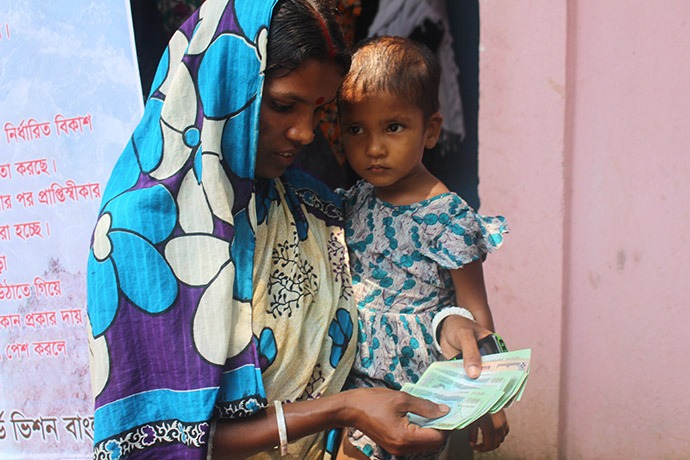
Flooding in Bangladesh in early 2017 impacted nearly 5 million people. Affected families received cash from World Vision to purchase food and rebuild their lives. Photo: World Vision
Humanitarians have begun to acknowledge a painful reality: There are more people in critical need globally than we can reach. That is, if we stick to business as usual in emergency response.
According to the UN Refugee Agency, “An unprecedented 65.6 million people around the world have been forced from home.” Layer on slow onset disasters like the hunger crises that have been building in Yemen and Eastern Africa, and add in sporadic natural disasters – earthquakes, tsunamis, hurricanes, floods, landslides – and you have a global response community stretched almost to the breaking point.
Giving cash directly to people in emergencies is one solution to the growing gap between humanitarian needs and capacity. In fact, research over the last decade has proven this method of aid delivery to be not only cheaper than traditional in-kind aid, but also incredibly effective at alleviating suffering.
A paper jointly authored by the Overseas Development Institute and the Center for Global Development two years ago extolls the benefit of cash-based humanitarian aid where appropriate. In addition to reducing the cost of providing aid, giving cash instead of stuff increases the speed of the response, improves transparency, and enables recipients to purchase exactly what they need when they need it most. And it has the added benefit of supporting local economies and businesses.
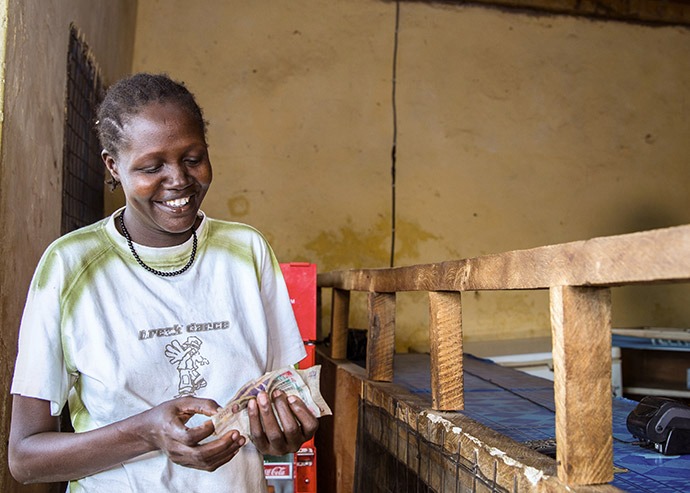
Catherine Nabulon, 34, of Abulon, Kenya, uses her E-wallet to procure safe drinking water for her family. Photo: Joy Obuya/Oxfam
To be sure, giving cash is no panacea. Where markets aren’t functioning, and where broader systemic needs are lacking, traditional aid responses are still necessary.
Only about 6 percent of all humanitarian aid is cash-based today, but that figure is growing. Further, cash aid is increasingly going digital, and this presents an opportunity to solve yet another challenge associated with poverty: financial exclusion.
According to McKinsey & Company, two billion people in emerging economies lack access to formal savings and credit. Having access to formal financial services would enable the poor to better manage their financial lives.
While they may not have access to financial services, nearly 80 percent of adults in emerging economies have something else – a mobile phone. Foundations like The Bill and Melinda Gates Foundation and aid organizations like Mercy Corps are increasingly exploring ways to turn cash-based aid into an on-ramp to wider financial inclusion for the poor.
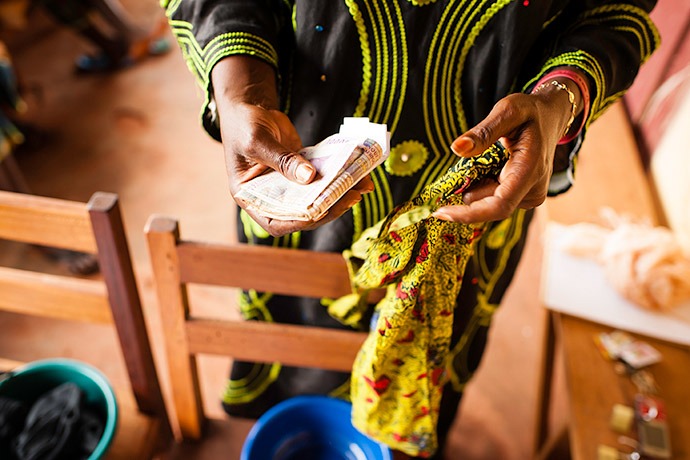
A Mercy Corps partner in Bangassou, Central African Republic, explains to beneficiaries how a community bank works. Photo: Sean Sheridan for Mercy Corps.
The following Global Washington members are currently providing cash-based emergency aid globally, whether in the form of physical cash and vouchers, or as mobile money and electronic vouchers:
Bill & Melinda Gates Foundation
The Bill & Melinda Gates Foundation’s Financial Services for the Poor program aims to play a catalytic role in broadening the reach of robust, open, and low-cost digital payment systems, particularly in poor and rural areas—and expanding the range of services available on these platforms. Their approach includes three objectives: Increasing poor people’s capacity to weather financial shocks and capture income-generating opportunities; generating economy-wide efficiencies by digitally connecting large numbers of poor and low-income people to one another and to financial services providers, government services, and businesses; and reducing the amount of time and money that poor people must spend to conduct financial transactions.
Mercy Corps
Over the last decade, Mercy Corps has implemented cash programming in 31 countries including Syria, Ukraine, Haiti, Niger, Yemen and Uganda. Mercy Corps was the first organization to pilot cash-for-work in Afghanistan and in response to the Indian Ocean Tsunami in 2004. Since July 2016, the organization has distributed over $46 million dollars in cash programming — benefiting more than 173,000 households. In 2017, Mercy Corps connected more than 1 million people to cash during emergencies, infusing more than $46 million into local economies around the world.
Oxfam
When disaster strikes, people living in the affected communities often lose the assets and income they need to keep their families fed, sheltered, and clothed. Distributions of cash can help disaster-affected families meet the complex needs that arise. For Oxfam, it’s a means to empower people and give them some control over their own destiny at a time of great uncertainty. Both in Oxfam’s humanitarian response programs, and in its advocacy to change government policy, cash programming is one of the central ways of supporting food security and livelihoods in an emergency context. Oxfam will continue to promote a “cash first” approach, so long as it is backed up by sufficient analysis of the market, wider context, and utilizes a well-honed information communication technologies capacity – and where it is not appropriate, Oxfam will utilize other modalities, including in-kind support.
World Concern
During the 2011-2012 Horn of Africa famine, World Concern provided families with vouchers for food and other items, but they have since found cash to be more efficient and useful for beneficiaries during a disaster or crisis. The organization is distributing cash grants of approximately $80 to families in Somalia affected by the current drought crisis. Families are using the cash to purchase food and supplies to survive. In addition, in 2016 World Concern provided cash to families in Haiti affected by Hurricane Matthew.
World Vision
Cash-based programming is an increasingly important tool for tackling the underlying causes of poverty. World Vision recognizes that using cash strengthens local markets; restores dignity and choice to people who are in need; and can provide efficient, tailored help to families. In 2016, the World Vision International CEO committed to providing 50% of the organization’s humanitarian assistance through cash by 2020.
Back to Top
Organization Profile
The Bill & Melinda Gates Foundation – Financial Services for the Poor
By Andie Long
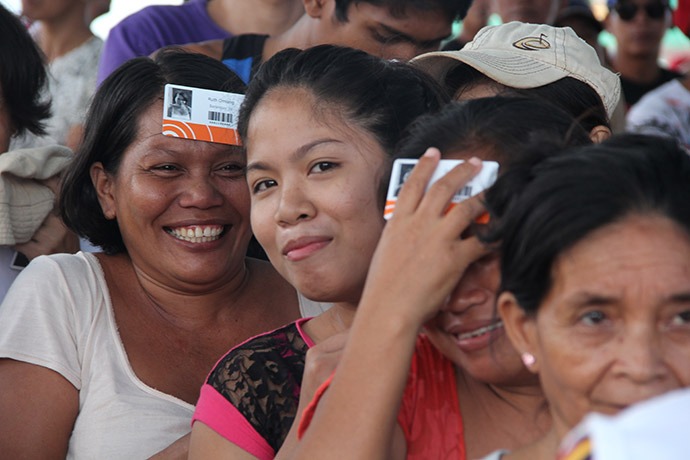
Giggling community members have a bit of fun in line, as they wait to use their Last Mile Mobile Solutions cards to pick up their goods. They are part of a cash-for-work program implemented by World Vision following Typhoon Haiyan in The Philippines. Photo Credit: World Vision
The Bill & Melinda Gates Foundation’s mission is to enable all people to lead healthy, productive lives. One of the most powerful leverage points the foundation has found to increase opportunities for people in the developing world to lift themselves out of poverty is ensuring they have access to the right tools to manage their financial lives.
“Poor people like everyone else have complex financial lives,” said David Lubinski, a senior program officer at the foundation. With the right financial tools, people can securely put away small amounts of money over time to create a cushion for unexpected financial shocks and to invest in growing their income through money-making opportunities.
Increasingly, as the humanitarian community has shifted towards cash, including digital money, as the preferred method for providing aid in emergencies, the foundation, other donors and their partners have been exploring how to turn these digital payments into a gateway to greater financial inclusion for those who have been marginalized or excluded from the financial system.
In early 2016, representatives from more than two dozen organizations, including the humanitarian and financial sectors, as well as funders and other experts, gathered in Barcelona to discuss how to make that dream a reality. Out of the two-day meeting, participants derived eight guiding principles for digital payments in humanitarian response.
With the Barcelona Principles in hand, the foundation’s Financial Services for the Poor and Emergency Response teams reached out to Ericsson, a telecom service provider, to explore possible commercial technology solutions that humanitarian organizations could learn from and possibly use to help deliver on this mission.
Ericsson was already a part of the United Nations’ emergency telecommunications cluster, and well-versed in disaster response. The company also had its own mobile wallet product, and the foundation sought to learn from the humanitarian community what else was missing.
As it turned out, quite a lot.
“When we first started working with Ericsson, what we thought was that the humanitarian organizations just needed a better technology,” Lubinski said. Instead, the four biggest challenges they found had very little to do with technology.
What was most urgently needed by the humanitarian community was a standard and efficient way to legally identify people. Within the financial sector, there’s something called KYC, which stands for “Know Your Customer,” and it enables financial institutions to comply with regulations and laws, not the least of which are anti-money laundering and countering financing of terrorism. Yet, Lubinski and the broader team working on this found that there were many diverse definitions of what could constitute the “minimum viable KYC.”
But KYC isn’t just a big problem for the humanitarian agencies; it’s also a challenge for the entire financial services ecosystem. At this point, Lubinski and his team posed two questions: Why is KYC different in emergency response than in non-emergency? And should it be?
To get to the bottom of these questions, the foundation became a major funder of Identification for Development. Hosted by The World Bank, ID4D is a group that is looking at how to arrive at a minimum standard data set for the approximately 1.1 billion people in the world who are currently unable to prove their identity, and are therefore excluded from not only financial services, but also healthcare, social safety nets, education, political participation, and more.
A second major challenge for humanitarian organizations wanting to use commercially available mobile wallets in emergency settings is that, in Lubinski’s words, “Sometimes donors ask for silly things – and they cost a lot!”
For example, a donor might stipulate that her funds only go to a particular individual, and only be used for one specific thing – such as food. This type of request might seem reasonable to the donor, because she wants accountability. But should the recipient of those funds be required to juggle multiple digital wallets in order to keep money from different sources separated? And what if there is money left over in one digital wallet, say the food budget, while another category, like medical expenses, is suddenly more urgent? Allowing for the beneficiary to make these decisions on her own is empowering and it reduces the administrative burden of tracking each and every purchase for every account holder.
The last two major barriers to using mobile wallets in emergency settings come down to infrastructure – physical infrastructure and human infrastructure. GSMA, the global mobile network providers association, along with others are looking at ways to improve damaged or insufficient infrastructure after a crisis or natural disaster. Further, The Level One Project at the foundation is taking a broad look at in-country policies and requirements that prevent resilient digital financial ecosystems from taking hold.
Finding ways to improve and expand financial services for the poor is just one of many complex challenges that The Bill & Melinda Gates Foundation has taken on to alleviate extreme poverty.
“We have co-chairs of the foundation who challenge us to take risks, including taking on these challenges in partnership with the community of humanitarian organizations who respond with frontline services in every disaster,” Lubinski said. “We are not funded by any government so we do not and cannot have a political agenda. That means we have an important role to play in accepting bigger risks and tackling the most pressing challenges facing the people who are most vulnerable – and this includes the two billion people who today do not have access to the basic tools to manage their financial lives.”
Back to Top
Changemaker
Thea Anderson, Technical Lead for Financial Services in Crisis, Mercy Corps
By Andie Long
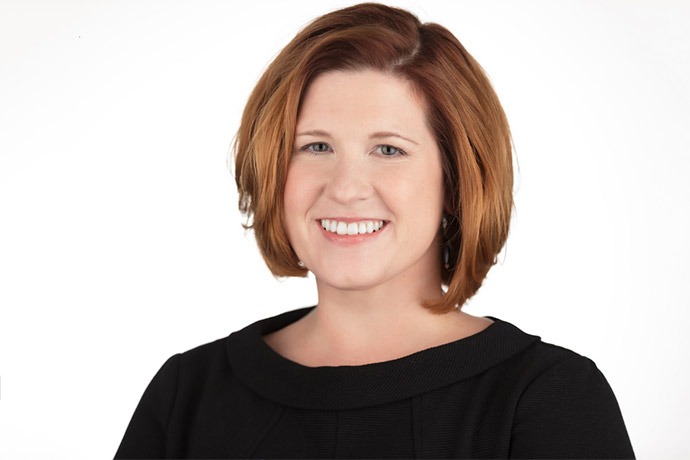
Not everyone is comfortable talking about financial services in a humanitarian setting, which may belie our own discomfort with the topic of money. For Thea Anderson, Mercy Corps’ technical lead for financial services in crisis and migration, money itself is an enabler, the thing that holds together any type of successful humanitarian and development response.
“I see financial services as the critical piece for reaching larger development, resilience, and humanitarian goals,” said Anderson.
Over the last 16 years, Anderson has worked in over 40 countries, managing multimillion-dollar financial and market system programs in fragile and complex environments across Africa, the Middle East, and Central Asia. Her first exposure to financial services came in 1998, when she began her career at CHF International – now Global Communities.
“They had a huge focus on financial services when I started,” she said. “CHF looked at ways to provide housing finance to people post-disaster, as well as financing to reinforce structures, so they could better withstand future disasters. After a disaster, people can fall into such deep cycles of debt. You need different savings and insurance products to help mitigate that.”
Asked what she likes best about the financial services sector, Anderson said, “I love how dynamic it is. It’s constantly changing with new actors, new technologies, and new research so we can understand what works and what doesn’t.”
Increasingly, Anderson finds herself excited by the role technology can play in increasing access to financial services. Yet she says, “The challenge is making sure it is used to include, rather than exclude people.”
The youngest of three kids growing up in Kentucky, Anderson remembers her family moving around a lot. But it wasn’t until college that she was exposed to life outside the U.S. “It was then that I realized there’s a whole world out there that I wanted to be a part of!”
To succeed in this field, Anderson advises would-be financial services practitioners to cultivate a wide range of technical skills and experiences.
“You need to be open to new technologies and working with people and understanding what their actual needs are and what their lives look like. You also have to be flexible and always wanting to learn, travel, and meet new people. If you stay closed off, the innovation will pass you by.”
When she thinks about how financial services will change within the humanitarian context over the next ten years, Anderson has a few theories. “I see the role of technology growing, especially the use of mobile technology and the potential role of digital ledger technology. Peer to peer financial options are also going to be stronger and more digital based.”
Anderson also sees a huge role for remittances sent from family members working abroad. In Africa alone, over $40 billion is sent and received annually in remittances from diaspora populations.
“Not only do remittances put money directly into people’s pockets, supporting household expenses such as food, education fees, and health costs, but they also enable longer-term investments in housing or businesses,” she said. “There is a huge opportunity to move remittances onto digital channels, reduce transaction costs, and ensure that ‘last mile’ clients can easily send and receive payments.”
Even the United Nations has recognized the need to elevate the focus on remittances. The Sustainable Development Goals push governments and providers to find ways to reduce remittance transaction costs and improve the infrastructure.
Having worked on market development and financial services at Mercy Corps for the last six years, Anderson recently took on a new role: financial services in fragile regions and frontier markets where the agency works. This includes a focus on refugee and internally displaced populations and opportunities to integrate people into local and national economies.
“Fragility is very context specific and within a country there can be separate fragile regions,” said Anderson. This might include countries or regions affected by a rapid-onset disasters (such as natural disasters or conflicts), as well as latent fragility, such as drought-prone areas, and long-simmering conflicts that cross borders. “Households and business owners often face reoccurring shocks and stresses, making it difficult for them to get ahead.”
People’s financial needs are often the same in both fragile and non-fragile areas. However, the challenge is that fragile regions tend to have higher overall operating costs, owing to the unpredictable political environments, poor infrastructure, and greater movements of people.
Mercy Corps has set an ambitious agenda for itself, not only to use digital cash relief in emergency settings to help families and business owners get back on their feet, but also where appropriate, to increase opportunities for them to access formal banking services. Mercy Corps’ relief effort in The Philippines after Typhoon Haiyan in 2013 is one such example, and it led to the organization being awarded the Global Mobile Award by GSMA in 2015 for “Best Use of Mobile in Emergency or Humanitarian Situations.”
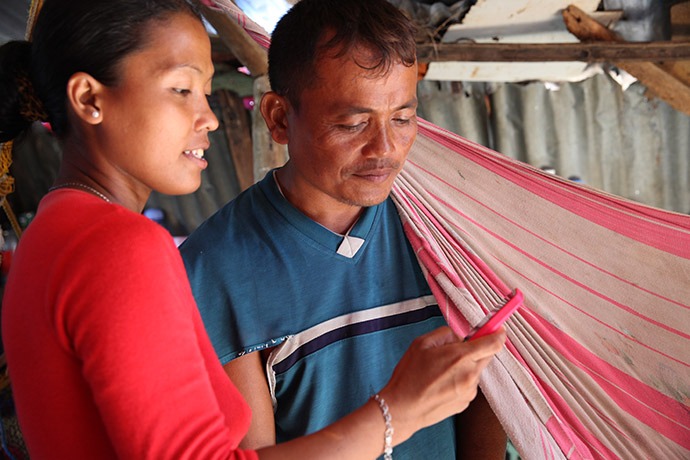
Merly and her husband Niño Francisco check their mobile bank account in North Cebu, Philippines. The couple were part of an unconditional cash mobile transfer program by Mercy Corps, following Super Typhoon Haiyan in 2013. Photo: Cassandra Nelson/Mercy Corps.
To coordinate these complex responses, Anderson and her team work with people from many different sectors – businesses, donors, foundations, governments and regulatory agencies, even religious institutions.
Cultivating trust among so many different groups can be challenging. “It requires understanding the different incentives behind each of the actors’ interest in financial inclusion,” said Anderson.
But the challenge is worth it.
“As an NGO we can’t do it alone. When we partner with the private sector, we have the potential to reach millions of underserved and underbanked individuals and get them on a pathway to financial inclusion.”
Organizations like Mercy Corps are looking for ways to reduce the potential risk for financial service providers in order for them to consider new clients, such as people in rural communities, or displaced populations, and offer new financial products to meet their needs.
“When companies look at their next billion customers, they will find organizations like Mercy Corps are already there,” said Anderson. “This creates a unique opportunity to build lasting partnerships that strengthen communities and meet commercial needs at the same time.”
Back to Top
Member Events
Sep 30: Women’s Enterprises International // Harambee Gala
Sep 30: SIGN Fracture Care International // Wine Dine for SIGN
Oct 7 – 15: Ashesi University Foundation // 9th Annual Trip to Ghana
Oct 11: Washington Nonprofits // Effective Online Donation Strategies
Oct 13: International Rescue Committee // Rebuilding Lives Dinner
Oct 26: Sahar: Education for Afghan Girls // Dinner
Oct 28: Mission Africa // 2017 Benefit Luncheon
Oct 28 – Nov 4: Partners Asia // Ultimate Bike Trip to Myanmar
Back to Top
Career Center
Chief Development Officer, Landesa
Executive Director, Seattle International Foundation
Marketing Associate, Upaya
For more jobs and resources, visit https://globalwa.org/job-board/
Back to Top
GlobalWA Events
October 26: Inland Northwest Conference for the Greater Good
November 2: Financing Sustainable Agriculture
November 29: GlobalWA Annual Conference – Renewing Global Leadership
Back to Top
 VillageReach announced today that its Board of Directors has named Emily Bancroft as President of VillageReach.
VillageReach announced today that its Board of Directors has named Emily Bancroft as President of VillageReach.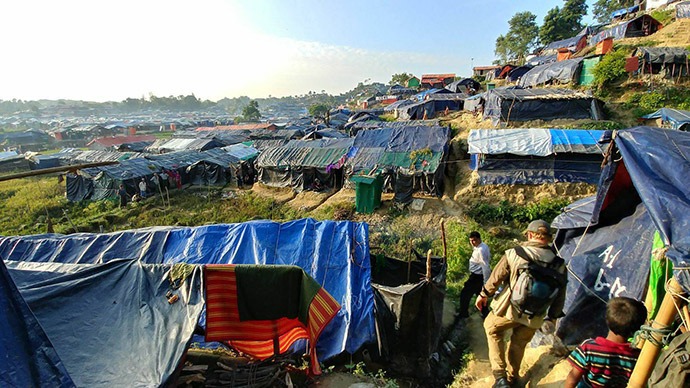
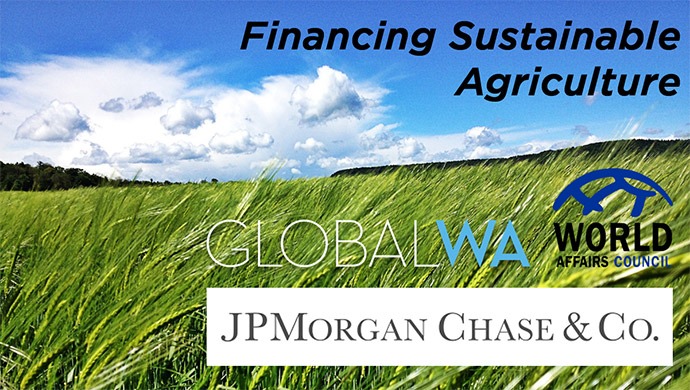





 “My mom is a complete rockstar,” said Matthew Arnold, Managing Director and Global Head of Sustainable Finance at JPMorgan Chase.
“My mom is a complete rockstar,” said Matthew Arnold, Managing Director and Global Head of Sustainable Finance at JPMorgan Chase. The
The 